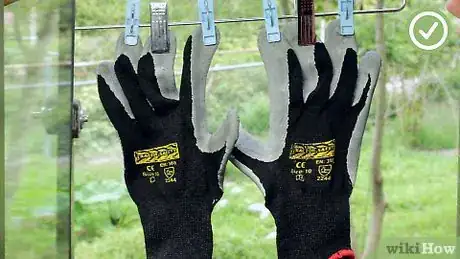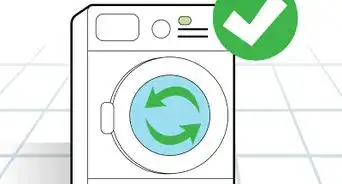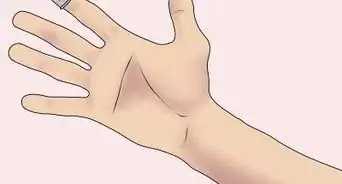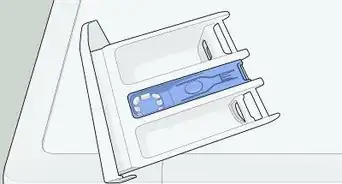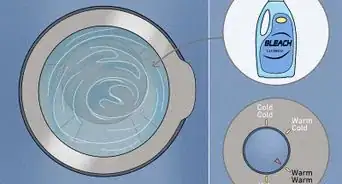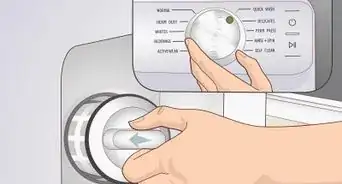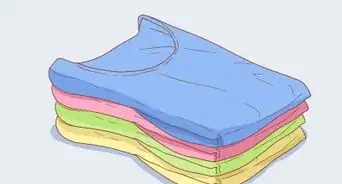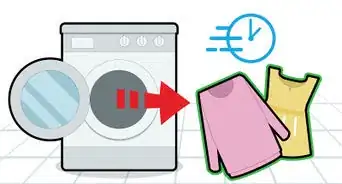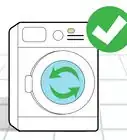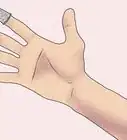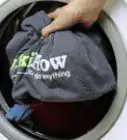This article was co-authored by wikiHow staff writer, Eric McClure. Eric McClure is an editing fellow at wikiHow where he has been editing, researching, and creating content since 2019. A former educator and poet, his work has appeared in Carcinogenic Poetry, Shot Glass Journal, Prairie Margins, and The Rusty Nail. His digital chapbook, The Internet, was also published in TL;DR Magazine. He was the winner of the Paul Carroll award for outstanding achievement in creative writing in 2014, and he was a featured reader at the Poetry Foundation’s Open Door Reading Series in 2015. Eric holds a BA in English from the University of Illinois at Chicago, and an MEd in secondary education from DePaul University.
The wikiHow Video Team also followed the article's instructions and verified that they work.
This article has been viewed 13,578 times.
Learn more...
Cut-resistant gloves are commonly used in kitchens and workshops to protect your hands in the event that you accidentally cut your hand. Cut-resistant gloves are often made out of metal, Kevlar, or tightly-knit fibers. Regardless of the material, these gloves are pretty easy to clean and you can typically use a washing machine if they aren’t made of metal. If you don’t own any cut-resistant gloves but you do a lot of cutting in your workshop or kitchen, they’re a great investment! Remember to always wash your cut-resistant gloves after handling food to prevent transferring contaminants from one dish to another.
Steps
Machine-Washing Your Gloves
-
1Check the tag to see if you can machine-wash the gloves. Look on the inside lining of the glove near the wrist and read the tag to see if the gloves can be machine-washed. You can typically wash the cutting gloves made out of fabric, but the mesh gloves made out of metal are not machine washable.[1]
- Wash your gloves after every use if you’re working with food to prevent bacteria and germs from spreading. Otherwise, clean your gloves whenever they get excessively dirty.
- If there isn’t a tag on the gloves, assume that you can’t wash them in the machine.
- You cannot wash the steel mesh gloves that look kind of like chain mail. They’ll scratch up the machine and may potentially break apart in the wash.
-
2Set the gloves inside the washing machine with other laundry. If you can wash the gloves in a washing machine, toss them in along with your other laundry. If the gloves are white or tan, toss them in with your white clothing. If they’re black or blue, throw them in with your darker laundry.[2]
- You can wash your gloves on their own if you want, but use the most delicate setting available on your machine if you do this.
- It doesn’t matter what your other laundry is. You can throw them in with delicates if you’d like. If you’re nervous about damaging your other clothes, feel free to place the gloves in a mesh laundry bag.
Advertisement -
3Add a standard amount of your liquid laundry detergent to the machine. Pour 1–3 tablespoons (15–44 mL) of detergent into the machine based on the size of your load. Alternatively, you can use the hash marks printed on the inside of the detergent cap to determine how much you need to use. Pour the detergent directly over the laundry.[3]
- You can use the detergent dispenser if your machine has one.
Warning: Do not use bleach or fabric softener, especially if the glove is made of Kevlar. Bleach and fabric softener may wear away the fibers in the glove and damage their ability to protect your hands.
-
4Set the machine to medium heat and run a standard wash cycle. Turn the dial to the “normal” or “regular” wash setting and set the heat to medium. Turn the machine on and wait for the cycle to complete.[4]
- If you’re really worried about damaging the gloves, feel free to use a delicate wash cycle.
-
5Tumble-dry your gloves on medium heat to dry them. Toss the gloves in the dryer along with the rest of your wet laundry and set the machine to medium heat. Run a standard dry cycle and wait for your gloves to finish drying.[5]
- Do not use a dryer sheet or any anti-static products. These may damage your gloves or reduce their efficacy.
- You can air dry your gloves if you’d like, but if they were fine in the washer they’ll be okay in the dryer.
Hand-Washing the Gloves
-
1Squirt some dish soap into your gloves and turn the warm water on. Put your cut resistant gloves on and turn the warm water on. Squirt 1–2 teaspoons (4.9–9.9 mL) of dish soap into your hands. You can use basically any standard dish soap for this.[6]
- If you use the gloves to cut food, wash the gloves by hand after every use. This will keep bacteria and residue from transferring from the gloves to your food. For other uses, hand-wash the gloves whenever they become visibly dirty.
-
2Wash your hands with the gloves on for 1-2 minutes. Rub your palms together to spread the soap out in your hands. Interlock your fingers and move them back and forth to lift dirt out from between the fingers. Then, for each glove, rub the top of each glove down with your palm. Do this for 1-2 minutes to fully work the soap into the fibers.[7]
- Give each wrist a few wrings as well to cover each portion of the gloves with soap.
- You know you’re almost done when you feel the soap soaking through to your skin.
-
3Rinse the gloves under warm water to remove the excess soap. Stick your fingertips under the water and slowly move your hands forward to rinse from the top to the bottom of the gloves. Wring your hands 2-3 times and hold the gloves under the water. Once the soap is gone and the water runs clear, take the gloves off and run some water through the inside of the gloves to rinse the insides of the gloves.[8]
- It shouldn’t take more than 30-45 seconds to rinse your gloves.
Tip: If you have those cut-resistant gloves that are made out of cloth, squeeze them gently when you’re done to remove the excess water.
-
4Hang the gloves from a clothesline or hook to air dry them. Either hang your gloves outside from a clothesline, or use a command hook to hang them up in your kitchen. Let the gloves air dry vertically for 3-4 hours before reusing them.[9]
- Do not air dry the gloves by leaving them flat. The underside of the gloves won’t dry out and they may attract bacteria or mold.
Warning: If you work in the food service industry, you must sanitize the gloves after washing them. Dip the gloves in a chlorine or QUAT-based sanitizer before hanging them up at the cleaning station.[10]
Warnings
- Do not use a dishwasher to wash your gloves. Dishwashers are not designed to thoroughly clean the gloves.[12]⧼thumbs_response⧽
Things You'll Need
Machine-Washing Your Gloves
- Washing Machine
- Laundry Detergent
- Dryer
Hand-Washing the Gloves
- Dish soap
- Water
- Clothesline or hook
- Sanitizer (optional)
References
- ↑ https://www.utmb.edu/food/Resources/nutrition_list//MQAS_23%20-%20Cutting%20Gloves.pdf
- ↑ http://www.tuckersafety.com/documents/WashingInst/TSP1031KutGloveWashingInstructions.pdf
- ↑ https://www.hantover.com/specsheet_pdf/32957-SpecSheet.pdf
- ↑ http://www.tuckersafety.com/documents/WashingInst/TSP1031KutGloveWashingInstructions.pdf
- ↑ http://www.tuckersafety.com/documents/WashingInst/TSP1031KutGloveWashingInstructions.pdf
- ↑ https://www.utmb.edu/food/Resources/nutrition_list//MQAS_23%20-%20Cutting%20Gloves.pdf
- ↑ https://www.utmb.edu/food/Resources/nutrition_list//MQAS_23%20-%20Cutting%20Gloves.pdf
- ↑ https://www.culinarycultivations.org/userfiles/filemanager/i0fnfslwc1t1dkzogvx3/
- ↑ http://www.tuckersafety.com/documents/WashingInst/TSP1031KutGloveWashingInstructions.pdf


